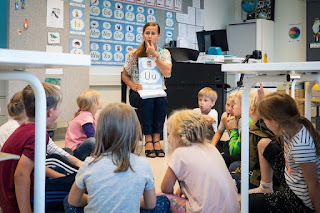Finland education system
The education system in Finland has gained international recognition for its high-quality outcomes and equitable nature. In this essay, we will take a closer look at the Finnish education system, exploring its history, structure, values, and key features.
History:
The Finnish education system has a long history, dating back to the 19th century when the country was under Russian rule. At that time, education was mainly provided by churches, and it was limited to the upper classes. However, after Finland gained independence in 1917, the government began to take a more active role in education, creating a comprehensive schooling system that aimed to provide equal opportunities for all.
Structure:
The Finnish education system is divided into four stages: early childhood education and care, basic education, upper secondary education, and tertiary education. Early childhood education and care are available to all children from the age of one, and it is largely publicly funded. Basic education is mandatory for all children between the ages of seven and sixteen, and it is provided free of charge. Upper secondary education is voluntary, but the vast majority of Finnish students continue their education beyond basic education. Tertiary education includes universities and polytechnics, which offer both undergraduate and graduate degrees.
Values:
The Finnish education system is based on a set of core values, including equity, creativity, lifelong learning, and social responsibility. These values are reflected in the way that education is structured and delivered in Finland.
Equity:
The Finnish education system is committed to providing equal opportunities for all students, regardless of their background or circumstances. This means that schools are not ranked or rated, and there are no elite schools for the wealthy or gifted. Instead, all schools are publicly funded, and they must adhere to the same national curriculum.
Creativity:
The Finnish education system places a high value on creativity, and it is believed that this is essential for promoting innovation and problem-solving skills. Finnish schools encourage students to think creatively and to express themselves through a range of art, music, and drama activities.
Lifelong Learning:
The Finnish education system recognizes that learning is a lifelong process, and it places a strong emphasis on continuing education and professional development for teachers. It also provides opportunities for adults to return to education, either through evening classes or distance learning.
Social Responsibility:
The Finnish education system teaches students to be responsible members of society, and it encourages them to take an active role in their communities. This is reflected in the way that schools are organized, with a strong emphasis on collaboration, teamwork, and community service.
Key Features:
There are several key features of the Finnish education system that are often cited as contributing to its success. These include:
Teacher Training:
All Finnish teachers are required to have a master's degree, and teacher training is highly selective. This ensures that Finnish teachers are highly qualified and well-prepared for their roles.
No Standardized Testing:
There are no standardized tests in Finland, except for one exam at the end of high school. Instead, teachers are trusted to evaluate students based on their performance in the classroom.
Less Homework:
Finnish students have less homework than their peers in many other countries, and they are encouraged to spend more time engaging in creative and physical activities outside of school.
Play-Based Learning:
Finnish schools place a strong emphasis on play-based learning, especially in early childhood education. This is believed to promote creativity, social skills, and emotional development.
Conclusion:



Comments
Post a Comment